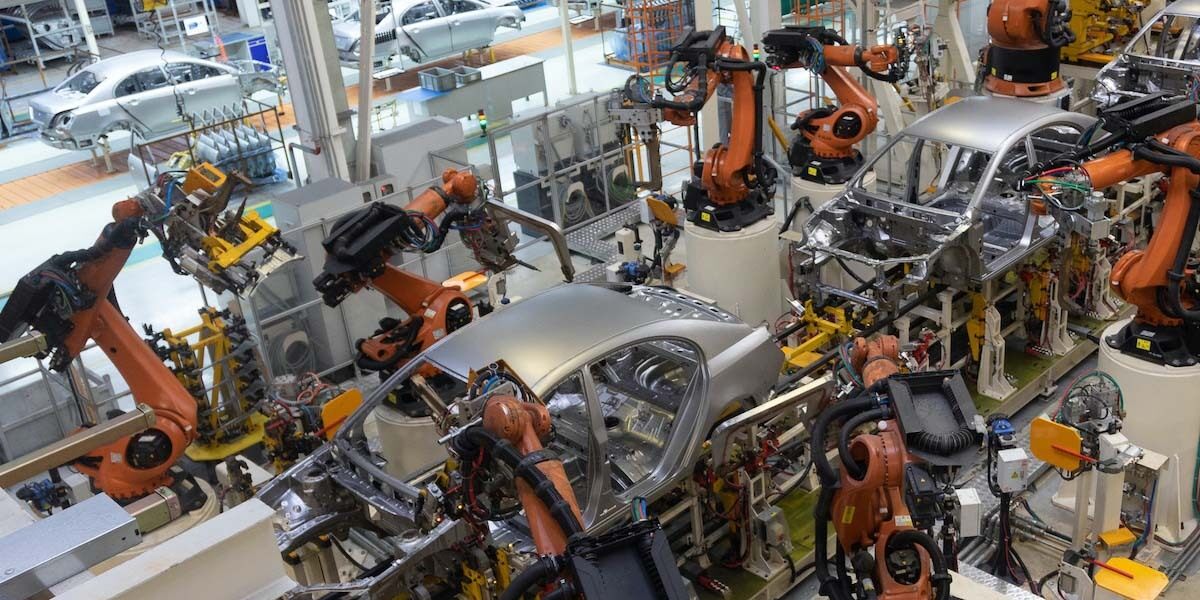In past blogs we’ve talked about the power of a digital thread connecting all parts of the automotive value chain. Connecting data to provide a single integrated platform that can feed analytics from supply chain through manufacturing to delivery and use of vehicles by customers creates more agile organisations that can respond to the changes facing the industry. But as well as extending forward into sales, marketing and service, the digital thread should extend back to link into product development. Research and development departments are some of the least impacted by orchestrated analytics and scaled out integration of data to date. But this is primed to change.
With so much data now being collected at almost every point of the manufacturing and sales process, and increasingly augmented by data from connected vehicles in daily use, there are emerging opportunities for R&D teams to mine this data for new insights. Analytics can dramatically enhance test and validation as well as new product development. They also have an important role to play in de-risking and optimising the whole process of product development as well as the project portfolio and its unique projects.
Enhancing the predictability of this notoriously unpredictable element of the automotive value chain can deliver massive benefits. We estimate that a 1% increase on the overall efficiency of the R&D process can save $160 million per year.
To date, R&D teams have operated in their own silos. The proliferation of data, the demands of customers and the need for agility in the market mean this is no longer tenable. R&D must tie into the digital thread to maximise effectiveness of existing data, increase efficiency and de-risk developments. The rewards for doing so run to hundreds of millions of dollars. The risk of not connecting to the digital thread could be much higher!
With so much data now being collected at almost every point of the manufacturing and sales process, and increasingly augmented by data from connected vehicles in daily use, there are emerging opportunities for R&D teams to mine this data for new insights. Analytics can dramatically enhance test and validation as well as new product development. They also have an important role to play in de-risking and optimising the whole process of product development as well as the project portfolio and its unique projects.
Save months and Millions in product development
Today’s vehicles are complex which makes it increasingly difficult to predict impact of changes to sub-systems or components using only experience and the cognitive capabilities of R&D team. Added to this is the explosion in the sheer amount and granularity of data available. This poses challenges and opportunities. Implementing and automating analytics at scale is the only approach to effectively model product development and predict the propagation of proposed changes across the product and project portfolio. In addition, integrated diverse data sets, including PLM data, test data, customer and usage data from connected vehicles as well as simulations and digital twin data creates new and better insights, faster. Integrated high-quality data can also start to automate some decision-making. Each use of analytics can cut time to value from product development. An integrated approach can multiple this to save months and millions in development costs.An alternative to billions of kilometres of testing
Test and validation is commonly held to account for at least fifty per cent of total R&D budget, and the complexity of new vehicles extends the breadth and depth of testing needed. As automotive companies move closer to autonomous vehicles the theoretical scope of testing could extend to billions of kilometres and hundreds of years! Data analytics-driven simulations are becoming the only viable approach. R&D teams will need to build and train predictive models to understand performance and interaction of not only every part of the vehicle (over 15,000 models), but every part of every variant owned by each customer (millions of models). At this scale ‘in silicon’ test and validation processes have the potential to massively shorten lead times for new products whilst meeting the increasingly exacting standards of both regulators and customers. The stakes are high, but so are the rewards. We calculate that for large automotive companies a conservative 1% improvement in test and validation efficiency could avoid over $80 million in costs each year.Green light the right projects faster
Finally, the digital thread can increase productivity and de-risk the R&D process itself. New product development is expensive and has many dead ends. Predicting the ramification of each individual project, its chance of success and consequences of failure is too complex to be undertaken by humans alone. Drawing on data in multiple formats, from multiple sources and at different cadences from live streamed data from connected vehicles, to test data and historic analysis of specific components, predictive analytics can identify suitable project to fast track. They can also unearth risks and potential unintended consequences. Analytical models that draw on all this data to identify which projects to green light earlier, and which to kill greatly de-risks R&D and improve efficiency.Enhancing the predictability of this notoriously unpredictable element of the automotive value chain can deliver massive benefits. We estimate that a 1% increase on the overall efficiency of the R&D process can save $160 million per year.
Agility and customer expectations driving change
These examples are just the tip of the iceberg. As automotive companies diversify their product concepts beyond the core electro-mechanical vehicle to include software and service products, as well as creating hyper-personalised experiences for customers, the benefits of extending the digital thread to product development multiply. With physical products lead times are 3 or 4 years, but analytics can shorten this with better decisions made on better data. Engineers spend less time searching for data and more time using it. With software, service and personalised experience products the time to market is ever shorter. For personalised experience the product is created instantly every time the customer interacts. Close to real-time data analytics is essential in this case to perfectly match product behaviour to customer expectations. In each case the advantages of integrating data from multiple sources to support predictive analytics improve the process. They allow faster time to value for the product itself, streamline and optimise processes, and free people to focus on essential, high value tasks rather than combing through ever more complex data.To date, R&D teams have operated in their own silos. The proliferation of data, the demands of customers and the need for agility in the market mean this is no longer tenable. R&D must tie into the digital thread to maximise effectiveness of existing data, increase efficiency and de-risk developments. The rewards for doing so run to hundreds of millions of dollars. The risk of not connecting to the digital thread could be much higher!

